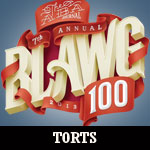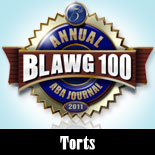South Carolina’s College Football Stadium Parking Jurisprudence
If there is one thing we here at Abnormal Use take seriously, it’s college football. Among our writers and contributors and fellow lawyers here at Gallivan, White, & Boyd, P.A., we boast fans of the University of South Carolina, Clemson, Notre Dame, and the University of Texas. When the autumn arrives, you can rest assured that we are talking stats and plays when we are not otherwise toiling or blogging. But, dear readers, imagine our dilemma! We here are perpetrators of a legal blog dedicated to the discussion of products liability! Rarely, if ever, are we permitted to discuss football on these fair pages! But the fates have smiled upon us! The South Carolina Court of Appeals recently issued an opinion dealing with the contentious issue of football stadium parking which, though not exactly related to products liability, is important enough to bring to your attention.
Last week, The State reported on a family of South Carolina Gamecock fans who sued the University of South Carolina after the university began charging them a hefty $595 for their three parking spots near the fabled Williams-Brice Stadium. The family alleged that they were entitled to free parking by virtue of a $140,000 donation they made in 1987 for a Lifetime Silver Spur membership in the Gamecock Club. The family had parked for free for nearly twenty years until the school began charging for the privilege in 2007. The university attributed the change to its efforts to raise money in order to compete with the facilities of other Southeastern Conference members.
Enter the courts. Following the Rosens’ suit against the university, the trial court granted the university’s motion for summary judgment on the grounds that the relevant written contract was not ambiguous and failed to identify any of its listed privileges as “free.” The trial court also found that as lifetime members, the family, by virtue of its $140,000 donation, only received the “benefit” of maintaining their donor level with the Gamecock Club. During the final week of June, in an unpublished opinion, the South Carolina Court of Appeals reversed, holding that the contract was ambiguous on the parking issue, primarily due to the family’s 20-year history of free parking. See Rosen v. University of South Carolina, No. 2011-UP-331 (June 27, 2011) (unpublished). In so doing, the Court of Appeals, in an opinion authored by Justice Huff, noted:
At oral argument, the University urged this court to consider that the Rosens paid for football tickets, including the increases in football ticket prices, as the “customs, practices, [and] usages” of the Gamecock Club. In considering the payment of ticket prices, we must also consider that during the same time period, the Rosens were not required to pay for the parking spaces. Exhibit A [of the contract, which listed the benefits and priorities the Rosens received] made no distinction in the language used describing the tickets and parking spaces. It neither stated additional charges would apply or that the benefits would be free. When considering “the customs, practices, [and] usages” of the Gamecock Club that despite similar language, the members paid for tickets but did not pay for parking, we find the contracts to be ambiguous as to the parking issue.
The unpublished opinion drew a concurrence and dissent from Justice Pieper, who agreed with the court on the parking issue but not on an unrelated – and far less interesting – beneficiary issue.
We here at Abnormal Use must commend our Court of Appeals. If anyone is willing to pay $140,000 for the privilege of attending college football games, they probably deserve some benefit. (There’s got to be some equitable Latin phrase from jurisprudence echoing that sentiment, right?). Whatever the case, the college football season officially begins in just a month and a half, and we’ll have to resist the urge to blog about that most important of subjects when September arrives.















 Apparently not. In fact, there are so many people who have had this happen that some smart plaintiff’s lawyer filed a putative class action for them, perhaps hoping to get new $2,000 TVs for everyone. Or at least new $1.99 wrist straps.
Apparently not. In fact, there are so many people who have had this happen that some smart plaintiff’s lawyer filed a putative class action for them, perhaps hoping to get new $2,000 TVs for everyone. Or at least new $1.99 wrist straps.